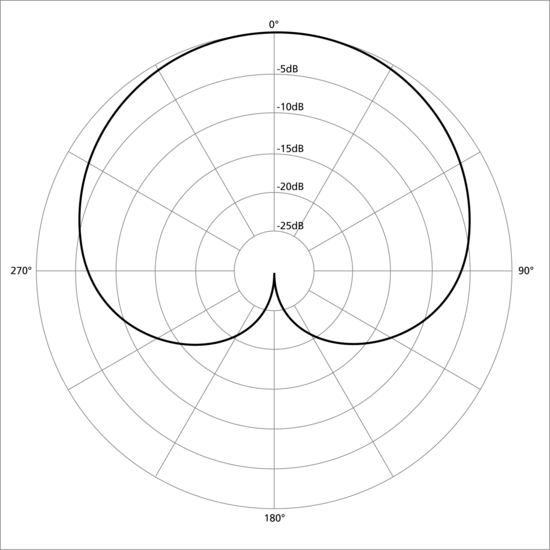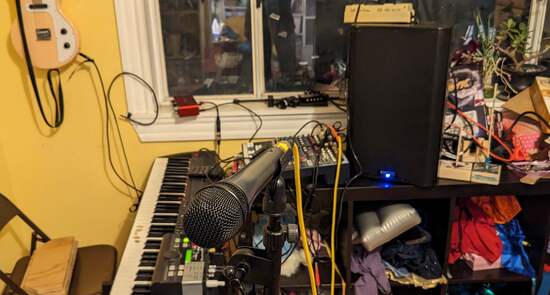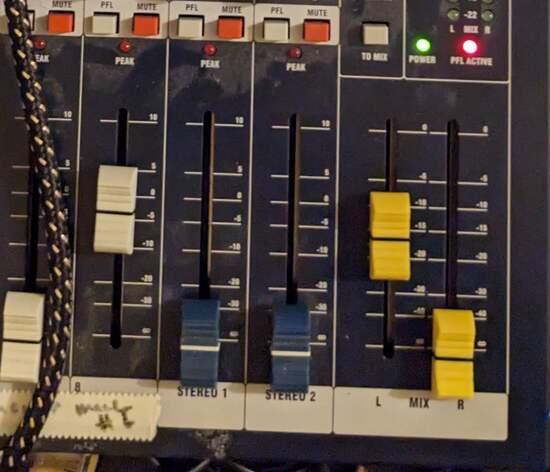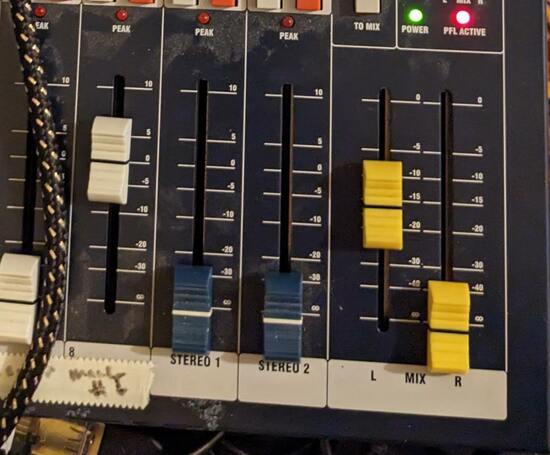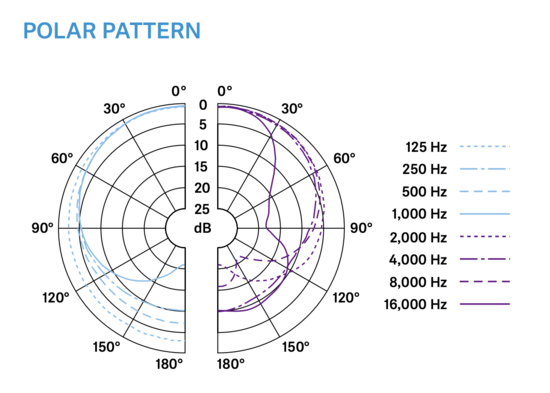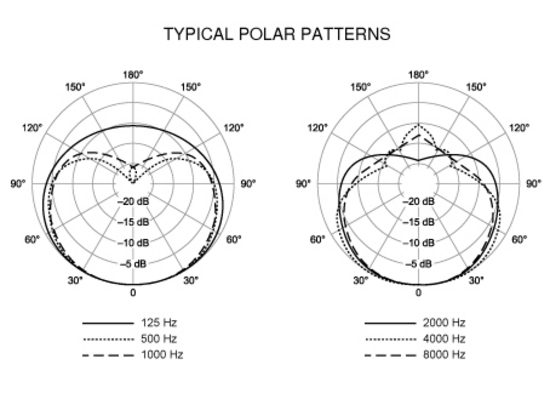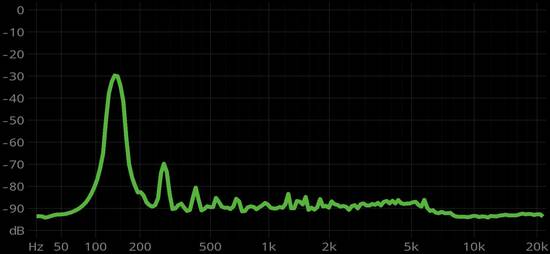How Cardioid Are Cardioids? |
February 12th, 2023 |
| audio, contra, sound, tech |
The idea is they pick up well in the direction you point them, reasonably well off to the sides, but very little in the direction they're pointed away from. This is valuable in a live sound context where you have 'monitor' speakers that point back at the performers: if you put the mic right between the monitor and instrument, pointing away from the monitor and towards the instrument, you should pick up much more "instrument" than "monitor".
Why do we want that? Because the more of the monitor you pick up both the muddier it will sound and the quieter the instrument has to be in the monitor before you get feedback.
According to the Wikipedia diagram above, this effect would be ~20dB if you got the mic angle within 30deg of correct. But how does real life compare, where rejection might not be as good and some sound could be bouncing around the room?
I took two common dynamic mics, a Shure SM-57 and a Sennheiser e835 and connected them to a QSC K10.2 powered speaker through a Soundcraft EPM-8 mixer. Each time the mic was on a stand, pointed directly towards or away from the tweeter, with the capsule 55" from the speaker's grille.
I set the mixer gain to 100% and slowly turned up the fader until I could hear the beginning of feedback. I tracked the difference in fader settings, and while this isn't perfect—the faders are not precisely calibrated tools—it lets us get a sense of how much of an effect we're talking about.
Here's an example with the e835. Pointed at the speaker:
And away from the speaker:
Comparing the positions across a few trials it was consistently around 5dB better. The SM-57 was also very similar, which makes sense since my impression is the e835 was inspired by the SM-57/SM-58 family.
While 5dB isn't nothing, it's very different from the diagram above. What's going on?
Our first problem is that we should be looking at the specs for these specific mics instead of a random diagram from Wikipedia. If you look at the e835 specs the rejection pattern is frequency-dependent:
Same for the SM-57:
Here's the frequency spread I was seeing for feedback with the SM-57 pointed directly away from the speaker:
This peak corresponds to around where the mics should have the worst rejection, ~125Hz. Looking at the charts, I think the SM57 should be managing 10dB and the e835 3dB, which isn't exactly what I saw, so my guess is the rest of the difference comes from sound bouncing around the room or manufacturing differences.
Overall, it's still worth pointing mics away from speakers: even 5dB is enough to make a worthwhile difference in how loud you can get a quiet instrument in the monitor before running into feedback issues.
(If you wanted to go farther you could notch out the feedback-prone frequencies from the monitor mix, but this is rarely worth doing in the contra dance live sound contexts I'm usually in. Monitors that loud start to be a problem for getting good sound in the hall.)
Comment via: facebook, lesswrong, mastodon, substack
